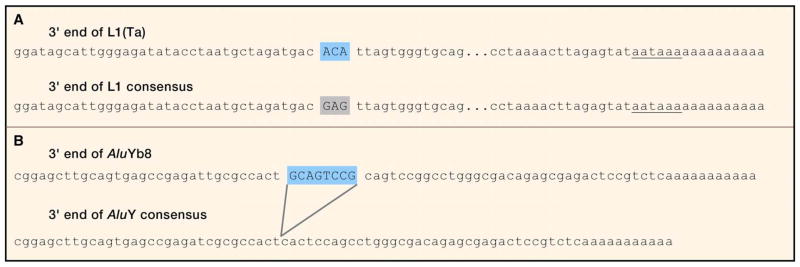Figure 3.
A. Families of L1 LINEs have expanded over evolutionary time in primate genomes in a singular succession of retrotransposition “waves”; that is, elements have accumulated in a specific order, with L1PA5 insertions preceding L1PA4 preceding L1PA3, L1PA2 and L1PA1 (Boissinot and Furano, 2001). For the last two million years, continued L1 activity is largely owed to the L1(Ta) subset (L1PA1). A 3 nucleotide sequence in the 3′UTR of L1(Ta) can be used to physically distinguish its members from sequences of older L1 LINEs in the human genome; this can lend specificity to L1(Ta) mapping PCRs. B. Similarly, insertion of a 8 base pair sequence near the 3′ end of AluYb8/9 subfamilies are characteristic sequences which can be used to specifically recover insertion sites of these elements.

